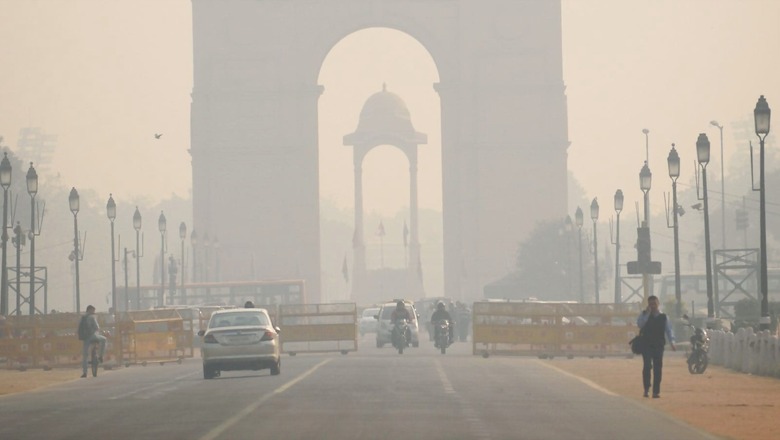
views
In a step towards improving the air quality of the Delhi-National Capital Region, the Commission for Air Quality Management (CAQM) has formulated a comprehensive policy with sector-wise recommendations for agencies and departments of the Central Government, State Governments, GNCTD, Central Pollution Control Board (CPCB) and State Pollution Control Boards (PCBs) of NCR to prevent, control and abate air pollution.
The policy covers industries, vehicles/ transport, construction and demolition (C&D), dust from roads and open areas, municipal solid waste burning, crop residue burning, etc.
It also deals with thermal power plants (TPPs), clean fuels and electric mobility, public transportation, road traffic management, diesel generators (DGs), bursting of fire crackers and abating air pollution through greening and plantation.
A differentiated approach and timelines have been suggested for various sub-regions — the National Capital Territory (NCT) of Delhi; NCR districts of Gurugram, Faridabad, Sonipat, Jhajjar, Rohtak, Ghaziabad, Gautam Buddha Nagar and Baghpat; other NCR districts; the entire state of Punjab and the non-NCR districts of Haryana, primarily for stubble burning.
HOW THE ROADMAP WAS MADE
The Supreme Court, in its order dated December 16, 2021, had directed the CAQM that with a view to “find permanent solution to the air pollution menace occurring every year in Delhi and NCR, suggestions may be invited from the general public as well as the experts in the field”.
The commission then constituted an Expert Group, which considered the suggestions received, interacted with interveners and experts as well as various stakeholders and State Government representatives. Apart from taking into account the suggestions received, the group also reviewed and examined the existing scientific literature, relevant policies, regulations, programmes and funding strategies of the Central and State Governments in various sectors, the current status of action and best practice approaches. Suggestions received were from civil society, research bodies, industry, experts, academia, individuals, etc. and related to mitigation in the key sectors of air pollution, air quality management, monitoring framework and institutional strengthening for implementation.
The scope of this multi-sector assessment included industries, power plants, vehicles and transportation, diesel generator sets, dust sources like construction/demolition projects/roads and open areas, municipal solid waste/biomass burning, episodic events like stubble burning, firecrackers and other dispersed sources. The inputs and suggestions received in a series of stakeholder consultations were incorporated appropriately in the relevant sections.
THE ACTIONS
The Expert Group, considering the issues and complexities involved, has suggested short-term (up to one year), medium term (one-three years), and long term (three-five years, preferably) actions.
This timeframe is further differentiated for different sub-regions/areas/districts/cities to provide the space for all to transform to meet the common air quality goal.
Broadly, the critical areas of transformation aimed for meeting the national ambient air quality standards include:
Widespread access to affordable clean fuels and technology in industry, transport and households
Mobility transition including through mass transit, electrification of vehicles, building walking and cycling infrastructure and reducing personal vehicle usage, etc
Circular economy for material recovery from waste to prevent its dumping and burning
Dust management from C&D activities, roads/Right of Ways (RoW) and open areas with appropriate technology, infrastructure and greening measures
Strict time-bound implementation, improved monitoring and compliance.
Read all the Latest News, Breaking News, watch Top Videos and Live TV here.


















Comments
0 comment